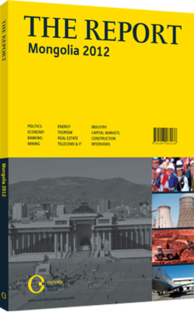OBG talks to G. Battsengel, CEO, Mongolian Mining Corporation (MMC)

Interview: G. Battsengel
How would you assess the continued development of Mongolia’s mining sector?
BATTSENGEL: For a long time, Mongolia has been known as a mineral-rich country, but our landlocked geography was a limiting factor to accessing international markets, in particular for bulk commodities. The enormous infrastructural challenges and lower commodity prices hindered the development of any significant mining project in the country. In the last 10 to 20 years, however, we have seen a significant increase in commodities sector mainly driven by increase in demand from China and followed by India. For example Chinese steel production witnessed almost five-fold increase during this period and thus strong economic growth of the neighboring China has provided Mongolia with a unique opportunity to monetise its resources.
Our private sector is only 20 years old and our company’s initial public offering was the first attempt by a Mongolian company to seek international listing, which was important in bring international attention to the sector. Although commodity demand and prices have picked up during this period, infrastructural challenges remain, and capital expenditure on infrastructure by companies is still high. For example, 70% of MMC’s entire capital expenditure budget for UHG mine development goes towards transportation infrastructure. I believe this figure would be comparable to that of most mining projects being developed in Mongolia.
What major differences can we expect in the amendments to the 2006 Minerals Law?
BATTSENGEL: The proposed changes to the 2006 Mining Law are, we believe, more environmentally driven. We hope this will make our industry more sustainable and will positively impact the behaviour of mining companies. The potential for environmental damage should be accepted by the sector, and so stricter regulations must also be welcomed. Our society should care for the environment and ensure its health. Developing mining, protecting the environment, and establishing a human development fund and sovereign wealth fund are all ways the industry can prepare for the future.
How important is the development of downstream and value-added industries?
BATTSENGEL: The primary market for Mongolia’s mineral resources (particularly coal) is China. We also expect demand from Korea and Japan, and growing demand from India. Historically, Mongolian coal miners were selling unprocessed raw coal to China. The coal was transported across the border, processed in China and sold to end-user customers such as steel mills and coke plants. Things are changing now – we started to wash and process our coal at UHG mine, and have established direct ties with our end-user customer base. This will result in higher revenues and profitability not only to our company, but also, by generating higher royalty and tax revenues, will benefit the country as a whole.
The government has implemented several measures to encourage and promote value-added production in the country by differentiating value added tax and royalty rates applied to the exportation of raw commodities as an alternative to processed mineral products. Another example of government support would be the intention to develop Sainshand Industrial Park by setting up a processing center that could add value to our industrial sector and subsequently to GDP.
What steps are being taken to address the lack of railway infrastructure on the mining sector?
BATTSENGEL: The severe lack of transportation infrastructure is a key challenge for the industry, and for the country as a whole. In June 2010, the parliament approved a railway development policy document, which is an important step, as having a proper rail network would significantly reduce the cost of transportation to both China and Russia. The railway strategy is a comprehensive plan that will be completed in three phases. It will take at least a decade to be fully operational, with an estimated cost of several billion dollars.
You have reached the limit of premium articles you can view for free.
Choose from the options below to purchase print or digital editions of our Reports. You can also purchase a website subscription giving you unlimited access to all of our Reports online for 12 months.
If you have already purchased this Report or have a website subscription, please login to continue.

